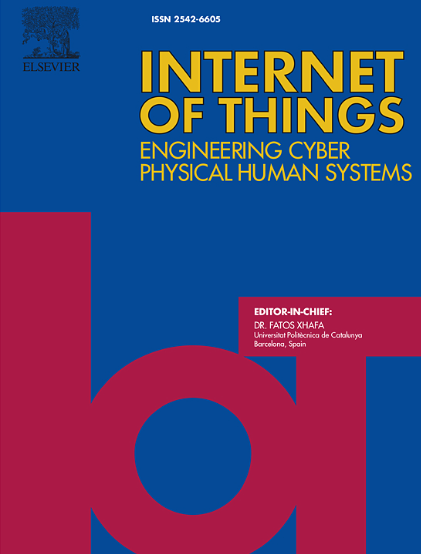Novel deep learning-based IoT network attack detection using magnet loss optimization
IF 7.6
3区 计算机科学
Q1 COMPUTER SCIENCE, INFORMATION SYSTEMS
引用次数: 0
Abstract
The increasing prevalence of Internet of Things (IoT) devices across various industries has raised critical security concerns due to their inherent vulnerabilities and high interconnectivity. While traditional security mechanisms have shown limitations in effectively securing large IoT networks, machine learning (ML) and deep learning (DL) methods have been explored to tackle the attack detection problem in this domain. However, existing approaches still lack optimal regularization and have limited comprehensiveness in validation across different IoT-centric datasets. To address these challenges, this research proposes the extension of the Deep Magnet Autoencoder (DMAE) and introduces a novel approach, the Cascade Deep Magnet Autoencoder (CDMAE), leveraging the Magnet Loss optimization as regularization for better class distinction through local separation in latent space. This enhanced class clustering strengthens attack detection by maximizing inter-class separation while compactly grouping data points of the same class, leading to more precise identification of benign and malicious traffic. Extensive experiments conducted on three contemporary IoT datasets, CIC-BoT–IoT, CIC-ToN–IoT, and CICIoT2023, demonstrate that our proposed models are able to produce meaningful latent representations with powerful discrimination between benign and malicious IoT network data. Empirical insights for fine-tuning the model are also provided through supplementary experiments. Comprehensive results show that the proposed methods significantly boost classification across different IoT datasets with high metric scores, outperforming other approaches.
基于磁铁损耗优化的新型深度学习物联网网络攻击检测
物联网(IoT)设备在各个行业的日益普及,由于其固有的漏洞和高度互联性,引发了严重的安全问题。虽然传统的安全机制在有效保护大型物联网网络方面显示出局限性,但人们已经探索了机器学习(ML)和深度学习(DL)方法来解决该领域的攻击检测问题。然而,现有的方法仍然缺乏最优正则化,并且在跨不同物联网中心数据集的验证中具有有限的全面性。为了解决这些挑战,本研究提出了深磁自编码器(DMAE)的扩展,并引入了一种新的方法——级联深磁自编码器(CDMAE),利用磁损耗优化作为正则化,通过潜在空间的局部分离来更好地区分类别。这种增强的类聚类通过最大化类间分离来加强攻击检测,同时紧凑地分组同一类的数据点,从而更精确地识别良性和恶意流量。在三个当代物联网数据集(CIC-BoT-IoT、CIC-ToN-IoT和CICIoT2023)上进行的大量实验表明,我们提出的模型能够产生有意义的潜在表征,对良性和恶意物联网网络数据具有强大的区分能力。本文还通过补充实验提供了对模型进行微调的经验见解。综合结果表明,所提出的方法显著提高了不同物联网数据集的分类能力,具有较高的度量分数,优于其他方法。
本文章由计算机程序翻译,如有差异,请以英文原文为准。
求助全文
约1分钟内获得全文
求助全文
来源期刊

Internet of Things
Multiple-
CiteScore
3.60
自引率
5.10%
发文量
115
审稿时长
37 days
期刊介绍:
Internet of Things; Engineering Cyber Physical Human Systems is a comprehensive journal encouraging cross collaboration between researchers, engineers and practitioners in the field of IoT & Cyber Physical Human Systems. The journal offers a unique platform to exchange scientific information on the entire breadth of technology, science, and societal applications of the IoT.
The journal will place a high priority on timely publication, and provide a home for high quality.
Furthermore, IOT is interested in publishing topical Special Issues on any aspect of IOT.
 求助内容:
求助内容: 应助结果提醒方式:
应助结果提醒方式:


